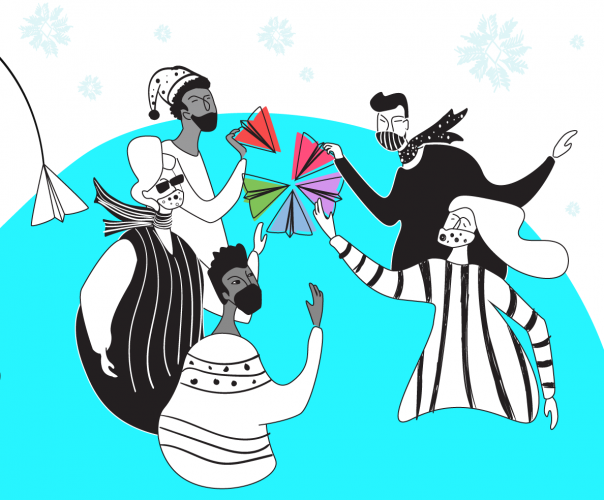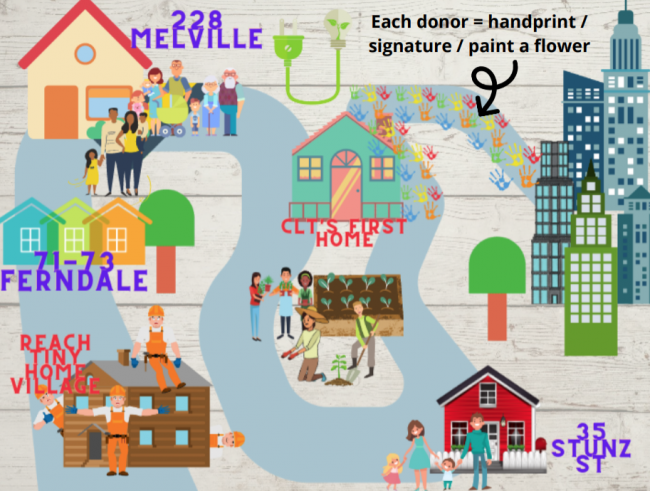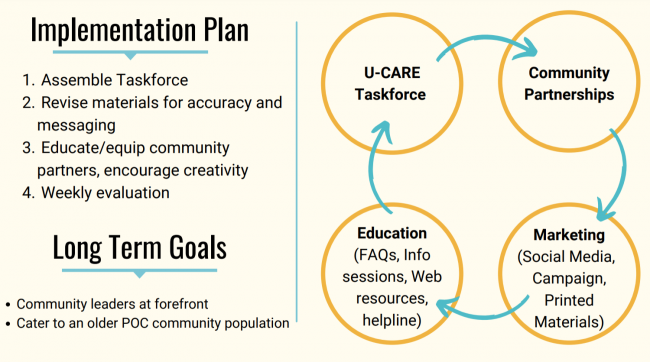
COVID-19’s presence in the U.S. has been tracked primarily through the number of deaths and cases. That’s because numbers are easy to understand in terms of their significance. More than 500,000 deaths. More than 28 million cases. Those numbers hit hard. But that data only provides a surface-level view of the pandemic’s impact on American lives.
The combination of COVID-19’s novelty and communicability hit us like a meteor, sending shockwaves through our society. Those who have not contracted the virus still feel it financially, socially, and emotionally. It has also further complicated life for individuals with pre-existing health conditions. In the city of Rochester, businesses, families, and individuals face a community health crisis that affects housing, transportation, food security, and other aspects of daily life.
For two weeks in January, 30 University of Rochester student teams, split among six community partners, competed virtually to provide outside-the-box ideas that address various facets of Rochester’s health crisis. This was the foundation of the UR Innovation Challenge.
The following businesses and organizations opened their doors to collaborate with Rochester students on innovative solutions:
- City Roots Community Land Trust
- Creativity Shell
- NAMI Rochester
- Rochester Community Acupuncture
- Taproot Collective
- Trillium Health
A collaboration between the Ain Center for Entrepreneurship, Barbara J. Burger iZone, Grand Challenges Scholars Program, Greene Center for Career Education and Connections, and Center for Community Engagement (CCE), the Innovation Challenge continues the student-based, community problem-solving started last year by the COVID-19 Challenge.
“How we interact with our neighbors matters,” says Deniz Cengiz, a Karp Library Fellow at iZone and community liaison for the CCE, who helped coordinate both challenges. “Creating connections between the Rochester community and Rochester students is and should continue to be a high priority for the University.”
In addition to learning from their “clients,” students heard from local entrepreneurs and Rochester alumni working in public health. Cengiz says the guest speakers were “great additions, providing more insight into local healthcare and the systemic issues it faces.” Plus, it offered even more networking opportunities.
More than 300 students have been introduced to and worked with 10 different community partners between the two challenges.
Now, let’s introduce you to the challenge winner and runner-up.
WINNER: JenKar
Team members: Jenna Diamico ʼ22 and Karlin Li ʼ22
Community partner: City Roots Community Land Trust
Problem: How do we increase engagement in our education programs, volunteer opportunities, and fundraising activities?
Solution: A three-part plan that teaches people about City Roots while establishing a stronger connection. Part I—An essay contest held in the Rochester City School District focused on the importance of housing justice. Part II—A community mural that highlights City Roots’ contribution and incorporates handprints and signatures from community members. Part III—Social media improvements, such as creating a Nextdoor account.

“Like many organizations during this pandemic, we have struggled to create and maintain the connections that are crucial to our success,” says James Dietz ʼ19, City Roots’ Americorps VISTA fellow. “Thanks to the hard work and creativity of Jenna and Karlin, we will be able to overcome this challenge by spreading the word about our mission in new and innovative ways.”
Li, whose team came in second place in the COVID-19 Challenge, was concerned not knowing about home ownership would be a disadvantage. But that lack of knowledge turned out to be an asset.
“Since we found it confusing, we thought about what would make this engaging to us,” Li says.
Diamico appreciated the freedom to think creatively. At one point, they and Li were considering big ideas, like building Lego communities and holding furniture drives. They also appreciate the community that the challenge provided.
“During these socially distant times, this was an amazing way to meet new people, other students, faculty members, and local organizations,” says Diamico.
RUNNER-UP: I#BackTheVacc
Team members: Jocelyn Mathew ʼ23 and Denise Navarrete ʼ22
Community partner: Trillium Health
Problem: How do we develop a community engagement activity or process that encourages people of color to receive the COVID-19 vaccine?
Solution: Instill confidence in the vaccine’s effectiveness and safety through a robust social mobilization plan that uses care advocates, information sessions, and marketing materials. For example, in social media and promotional materials, Trillium should use the phrase “I #BacktheVacc” to create vaccine ambassadors.

“It was inspiring to watch students and Rochester organizations dedicate time and effort to finding solutions for the pressing issues in our community,” says Mathew.
Neither Mathew nor Navarrete have any intention of stopping here.
“We are excited to continue working to combat vaccine hesitancy in Rochester,” says Navarrete.
And for that, they take first place in our hearts. ∎
For more information on the Innovation Challenge, contact Deniz Cengiz at dcengiz@u.rochester.edu. If you would like to hear more about the proposal for City Roots, contact Karlin Li at kli27@u.rochester.edu, and for the Trillium Health proposal, contact Jocelyn Mathew at jmath13@u.rochester.edu. Enjoy reading about the University of Rochester Libraries? Subscribe to Tower Talk.

